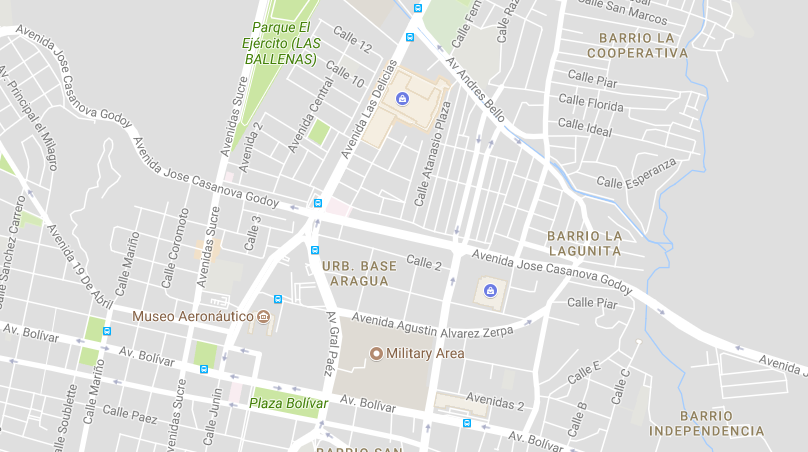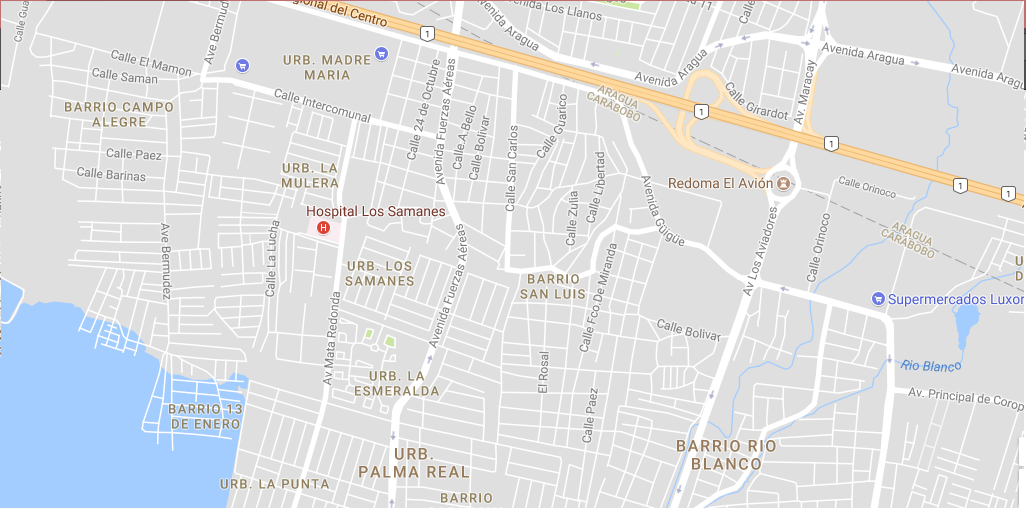Maracay’s turn
What started as a road blocking protest ended in a mayhem of looting, fire and bullets, screams. A guide to 24 hours of mayhem in my hometown.


For a long time it was said protests didn’t touch Maracay due to the big military presence in the city. This week, the myth was dispelled.
Early on Monday, protesters were setting up barricades around Calicanto, San Isidro, and Base Aragua, both more affluent, center-north neighborhoods known for protest activity, blocking 19 de Abril, Sucre and Casanova Godoy Avenues, pretty much cutting off the city’s North and South axes.
The Universidad Bicentenaria de Aragua, where I teach, was covered in graffiti from the week before, admonishing the people for their indifference and reminding them of the fallen, especially Fabián Urbina, a young Maracayero student killed while protesting last week in Caracas.
The facilities were half empty because the buses weren’t running and people were scared to get cut off from Maracay, Turmero, Cagua, El Limón and other urban centers. Some students, meanwhile, were organizing to go out and protest.
By noon, downtown Maracay was empty. People were trying to figure out how get past the barricades to get home or at least not getting locked out in a different part of the city. Reports of 17 year-old Jofre Rodríguez shot in Turmero, near Maracay, probably kept people cautious.
At the university, the faculty decided to suspend classes. To get back home we had to traverse part of the Avenida Casanova in the opposite direction, navigate our way inside Calicanto and ignore the traffic lights down 19 de Abril.
In the afternoon, protesters in Las Delicias, escalating the events of previous days, burned down the local CANTV and SENIAT (the local state-owned phone company and tax collection offices) in the area. This was rough, but not unexpected. Las Delicias, located along the avenue of the same name and roughly analogue to Chacao in Caracas, has always been a hub for protests.
Then, by nightfall, the unexpected happened.
#ARAGUA ENCENDIDA TODO TRANCADO 8:30PM pic.twitter.com/VWkUPwx6uq
— Carmen E. Pecorelli (@CarmenPecorelli) June 27, 2017
#26Jun Protestas por doquier en #Maracay Imposible pasar hacia el norte de la ciudad. Todos los accesos cerrados 8:30pm foto @churuguara pic.twitter.com/gMQm8fCNzX
— Amira Muci (@amiramucic) June 27, 2017
Maracay sigue encendida por todos lados avenida Bolívar cruce con Libertad #26Jun pic.twitter.com/Pe4lC0Y7R8
— Eleazar Urbaez (@FEDGLOCK) June 27, 2017
#26Jun Momento cuando saquean supermercado San onofre en Los Samanes sur de #Maracay pic.twitter.com/WZPj0zbt74
— Gregoria Díaz (@churuguara) June 27, 2017
In situations like these, it’s hard to say where exactly it all starts out. Eventually, people started looting along Las Delicias Avenue: pharmacies like SAAS and Farmatodo and a couple of supermarkets, including a Central Madeirense.
Soon the situation spread southward, to downtown Maracay —where the PSUV headquarters were burned down— and though there were some incidents in Western Maracay and the northwestern township of El Limón, it was in the South and East of the city that experienced the most damages.
While northern Maracay is full of trendy stores, well-off apartment complexes and the cool breeze blowing down from the Henri Pittier National Park, southern Maracay is poorer, with industrial parks and slums built around the heavily-polluted Lake Valencia.
Just like in other parts of the city, butcher shops, bakeries, supermarkets and pharmacies throughout Aragua Avenue and in neighborhoods like Campo Alegre, Río Blanco and Mata Redonda suffered. Probably the biggest victims were a Makro store and the Pastas Sindoni manufacturing plant, both located in San Carlos.
One of the worst-hit neighborhoods was Los Samanes, slightly better off due to development of urbanizaciones, shopping outlets and a large public hospital in the 90’s.
We talked with one of the neighbors about his experience: “Everything was calm, even with some protests in the area, the police blocked the road to the hospital but you could still go there on foot. Then, at night, it all began. People started to move their cars inside, streets were emptied except for motorcycles and you could hear what seemed like gunshots. Some relatives came by and we spent all night awake and tense.”
Throughout the night and early morning, looting was reported in Turmero, Palo Negro, Santa Rita and other towns south and east of Maracay.
Probably the biggest victims were a Makro store and the Pastas Sindoni manufacturing plant, both located in San Carlos.
As morning broke over a city paralyzed by fear, the remains of the hell let loose the night before became apparent. The streets of Maracay were filled with garbage bags, old furniture, and whatever could be found to create barricades. In many places, disturbances were still underway.
The Ministry of Interior reported over 60 affected businesses and 200 detained. For the second day, public transportation didn’t work and shopping malls and other businesses in downtown didn’t open. Across the city, neighbors from nearby apartment buildings started to close down streets for another night that could have anything in store.
Last night we asked our guy in Los Samanes to see if things calmed down over there. Some people tried to get inside the neighborhood and he now was sleeping next to a machete, afraid he might be forced to use it.
Meanwhile, as stores are emptied out rumors abound, not many seem sure what’s happening or who to trust. Some claim irregular armed groups, commonly known as colectivos, brought in buses full of people ready to grab as much as they can, Dakazo-style.
Others say that this is just a Maracayazo, a breaking point where a tired, hungry, anxious city reaches a limit and breaks down whatever remains of social order out of sheer despair.
And as this all went down, at the least during the early hours, many people were asking the same question: Where are the authorities?
For the second day, public transportation didn’t work and shopping malls and other businesses in downtown didn’t open.
It’s hard to say. Some reported they simply withdrew, unable to handle the number of people. Others, that they joined the looters themselves on grabbing whatever they could. Some inquiries were held in La Cooperativa, not far from Las Delicias.
The truth is, while this goes on, those who benefit from chaos just have to sit back and wait for the right time to call for order.
For the time being, there’s nothing left but to lock your door, pile up your heaviest furniture against the front door, sleep with one eye open and wait for dawn to break.
For a long time “The Cradle of the Revolution” has been Chavismo’s nickname for Maracay. A traditional hub for the armed forces, it was here where Hugo Chávez, then leader of a parachute brigade, tried to launch a coup and changed a nation forever.
And now, 25 years later, the inhabitants of Venezuela’s premier military city refer claim, with morbid irony, that they are living in the “The Gravesite of the Revolution”, the dried husk of the 21st Century Socialism.
Caracas Chronicles is 100% reader-supported.
We’ve been able to hang on for 22 years in one of the craziest media landscapes in the world. We’ve seen different media outlets in Venezuela (and abroad) closing shop, something we’re looking to avoid at all costs. Your collaboration goes a long way in helping us weather the storm.
Donate






